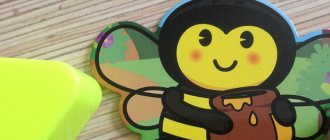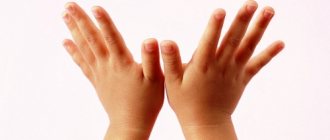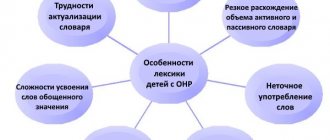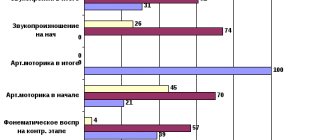Classification of physical education minutes
Physical education is a fun physical exercise aimed at relieving fatigue.
But what about fatigue? Why are children tired right now? Which physical activity will bring the greatest benefit? Educators must know the answers to these questions before offering physical activity to children.
There are countless different types of physical exercises. Nowadays, they can be found in a large number of books presented on bookstore shelves and on the Internet. Choosing an effective physical activity that is suitable for your children depends on what type of activity you are currently doing with preschoolers, what type of rest, what type of physical activity the kids need most.
Motor-speech
Interesting
Motor-speech physical exercises give rest to various muscle groups, activate the activity of the brain, cardiovascular and respiratory systems, and improve blood supply to internal organs. In addition, they help adults develop coordination of movements in preschoolers, stimulate the development of speech skills, activate memory and attention, and develop creative imagination.
Children really enjoy performing simple movements to rhythmic, easy-to-remember verses. In my work, I learn new physical exercises - warm-ups no more than two a month, I try to do this during morning exercises, on walks, etc., so that during direct educational activities all children know and perform movements, pronounce words.
Options for motor-speech physical education:
One - they waved their hands up and sighed. Two - three bent down. got the floor and four - stood up straight and repeat first. We inhale the air strongly. When bending, we exhale in a friendly manner. But there is no need to bend your knees. So that our hands don’t get tired, We’ll put them on our belts. Jumping like balls Girls and boys
We were drawing and tired. They stood up together very quietly. They clapped their hands: one, two, three. They stomped their feet: one, two, three. And they stomped and clapped even more. They sat down, stood up, stood up, sat down, and didn’t hurt each other. We'll rest a little and start drawing again.
What a miracle - there will be a house! We don’t live in it yet... (walking in all directions) We’ll build it ourselves (stopped) With a brush and pencil! (hands on the belt) On paper, slowly Three floors rose: (stretched up) Roof (touch your head), Windows (hands forward), Door (arms to the sides), Balcony (tilt, touch your toes with your hands), It turned out nice house! (jumping) And then we’ll decorate it, draw it and paint it. (walking)
Ophthalmic pauses
The strain on the eyes of a modern child is enormous. This includes television with its 24-hour children's channels, a computer, a cell phone, and other entertaining technical “things” without which a modern little person cannot imagine his life. And the child’s eyes rest only during sleep.
Therefore, eye gymnastics is useful for children of any age in order to prevent visual impairment. Take preventive measures and you will prevent visual fatigue!
Interesting
Children are very interested in electronic physical exercises for the eyes (physical exercises - ophthalmic simulators). This is gymnastics for the eyes, prepared in advance using computer technology.
For example, a table with pictures is presented to the attention of preschoolers on the monitor. A butterfly sits on the edge of the table and flies from one picture to another with every mouse click. Children follow it with their eyes and name the pictures on which the butterfly lands.
But, unfortunately, the implementation of electronic educational resources in preschool educational institutions still leaves much to be desired, so most often educators independently make various visual tables or use a variety of eye exercises in their work.
To rest their eyes, older children can, without getting up, look up, down, right, left, draw a circle or the first letter of their name with their eyes. But it is much more interesting for younger children if the exercises are accompanied by a poetic text.
Dance physical training sessions. They are usually performed to the music of popular children's songs. All movements are arbitrary, they dance as best they can. They are performed to music, but are distinguished by a more precise execution of the elements.
Physical education and sports physical education minutes
This is traditional gymnastics, which is performed strictly by counting, with an even alternation of inhalations and exhalations. Each exercise is designed to strengthen specific muscle groups. This can include running, jumping, squats, and walking in place.
Imitative physical education minutes
They depend on the imagination and creativity of the teacher. You can imitate the movements and sounds of cars, trains, animals, the movements of frogs, monkeys, grasshoppers, and bees. These physical education minutes help children switch gears and cheer up.
Finger gymnastics
For preschoolers, holding a pencil or brush in their hands is a lot of work. They clench their fingers very tightly, believing that the tighter they hold them, the more beautiful the drawing, numbers or letters will be. As a result, the small muscles of the arm and hand quickly get tired and require relaxation.
What can help in this case?
The best physical exercise in such a situation is finger gymnastics.
Magpie.
In this case, the index finger of the right hand performs circular movements along the palm of the left hand:
The white-sided magpie cooked porridge and fed the children.
Then the little finger, ring finger, middle finger, index finger and thumb are bent in turn.
Gave to this, Gave to this, Gave to this, Gave to this, Gave to this.
or, alternatively:
I didn’t give it to this: You didn’t carry water, You didn’t chop wood, You didn’t cook porridge - You have nothing!
In this case, the thumb does not bend.
Lock!
Place your hands in a lock, intertwining your fingers. While reading the poem, rhythmically swing the “lock”:
There is a lock on the door. Who could open it? They knocked
On this word, rhythmically tap the bases of your palms against each other, without releasing your fingers.
Twisted
Without releasing your fingers, pull one hand towards you, the other away from you, alternating them.
Pulled
Pull the handles in different directions, straightening your fingers, but without releasing the lock completely.
And they opened it!
Suddenly releasing your arms, spread them wide to the sides.
The poem should not be read very quickly, but clearly and rhythmically so that the baby’s movements coincide with the rhythm. Especially highlight the final “opened”; kids love to demonstrate how wide they opened the lock.
Berries
Raise your arm slightly in front of you so that your relaxed hand is approximately at face level. The fingers are relaxed, hanging down.
I pick berries from a branch
With the fingers of your other hand, stroke each finger from the base to the very tip, as if removing an imaginary berry from it.
And I collect it in a basket.
Place both palms in front of you in a cup.
It will be a complete basket.
Cover one cupped palm with another cupped palm.
I'll try a little. I'll eat a little more.
One folded palm imitates a basket, with the other hand we take out imaginary berries and put them in the mouth.
The path to home will be easy!
Imitating legs, the middle and index fingers on both hands “run away” as far as possible.
Fish
The fingers of both hands are folded in a pinch. The arms move in a wave from the shoulder, depicting diving fish.
The fish swam and dived in the clean, warm water. They will shrink
On the last word, the fingers are clenched very tightly.
They will unclench
The fingers splay out to the sides.
They will bury themselves in the sand.
With your fingers folded again, you alternately make movements with your hands, as if you were digging up sand.
Finger boy.
Squeeze each of the baby’s fingers, as if addressing him: from the index finger to the little finger
Thumb-boy, where have you been? I went into the forest with this brother. I cooked cabbage soup with this brother. I sang songs with this brother. With this, I blew the trumpet.
This finger.
Invite your child to bend the fingers of his left hand into a fist, then, while listening to the nursery rhyme, straighten them one by one, starting with the thumb.
This finger is grandfather, this finger is grandmother, this finger is mother, this finger is father, Well, this finger is me. That's my whole family.
Relaxation exercises
The tension-relaxation relaxation technique is the best way to learn to recognize existing tension in the muscles and get rid of them.
It is known that during emotional stress, when a child is very excited, agitated, or depressed, excess tension occurs in certain muscle groups. Children cannot get rid of this tension on their own; they begin to get nervous, which leads to tension in new muscle groups.
Preparing for relaxation
When using relaxation techniques, it is important to adhere to the technique of a gradual transition to a state of relaxation. It is recommended to perform the exercises accompanied by pleasant, calm music:
- Stage 1. Lie down comfortably and relax. Children lie down on the mats and get comfortable. The arms are extended along the body, relaxed. Legs are straight, not crossed.
- Stage 2. Feel and “examine” your entire body with your mind’s eye, evoking a feeling of warmth and successively “examining” all its parts: head, arms, legs, torso. It is advisable to close your eyes while doing this.
- Stage 3. A feeling of pleasant warmth - comfort from a relaxed body, pleasure, peace.
Children need to be taught to feel this tension, change its degree or remove it completely by relaxing certain muscle groups. When the muscles relax, emotional tension weakens or disappears completely.





